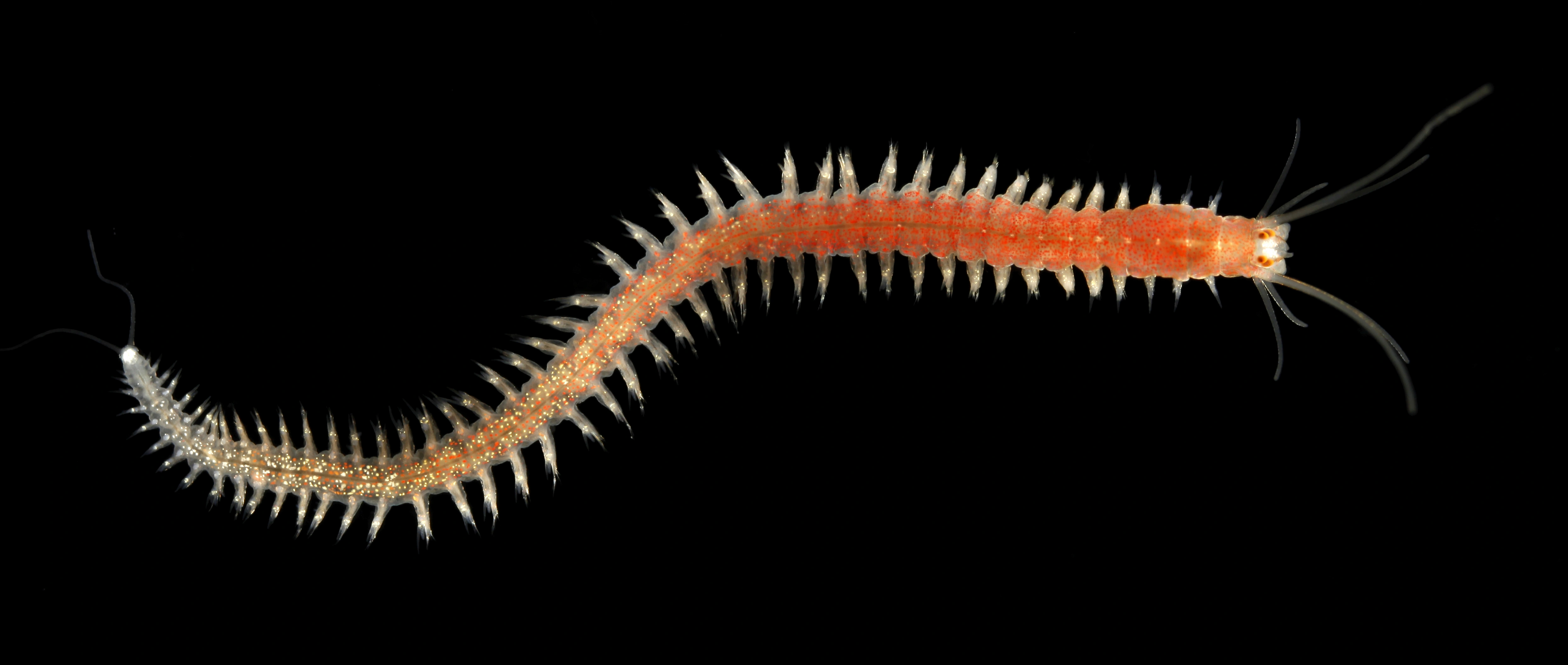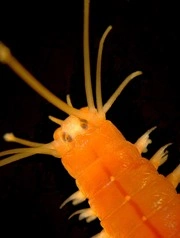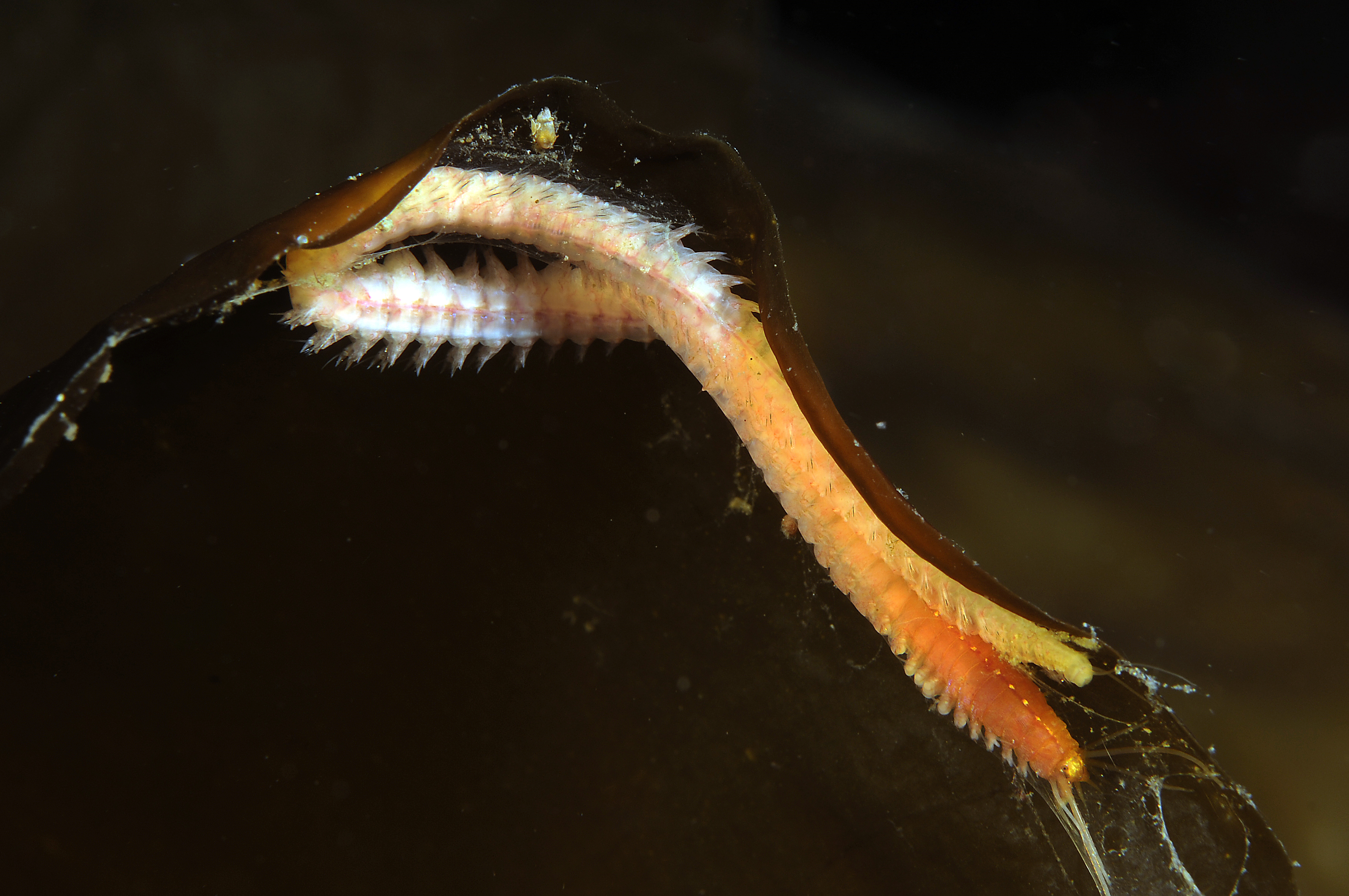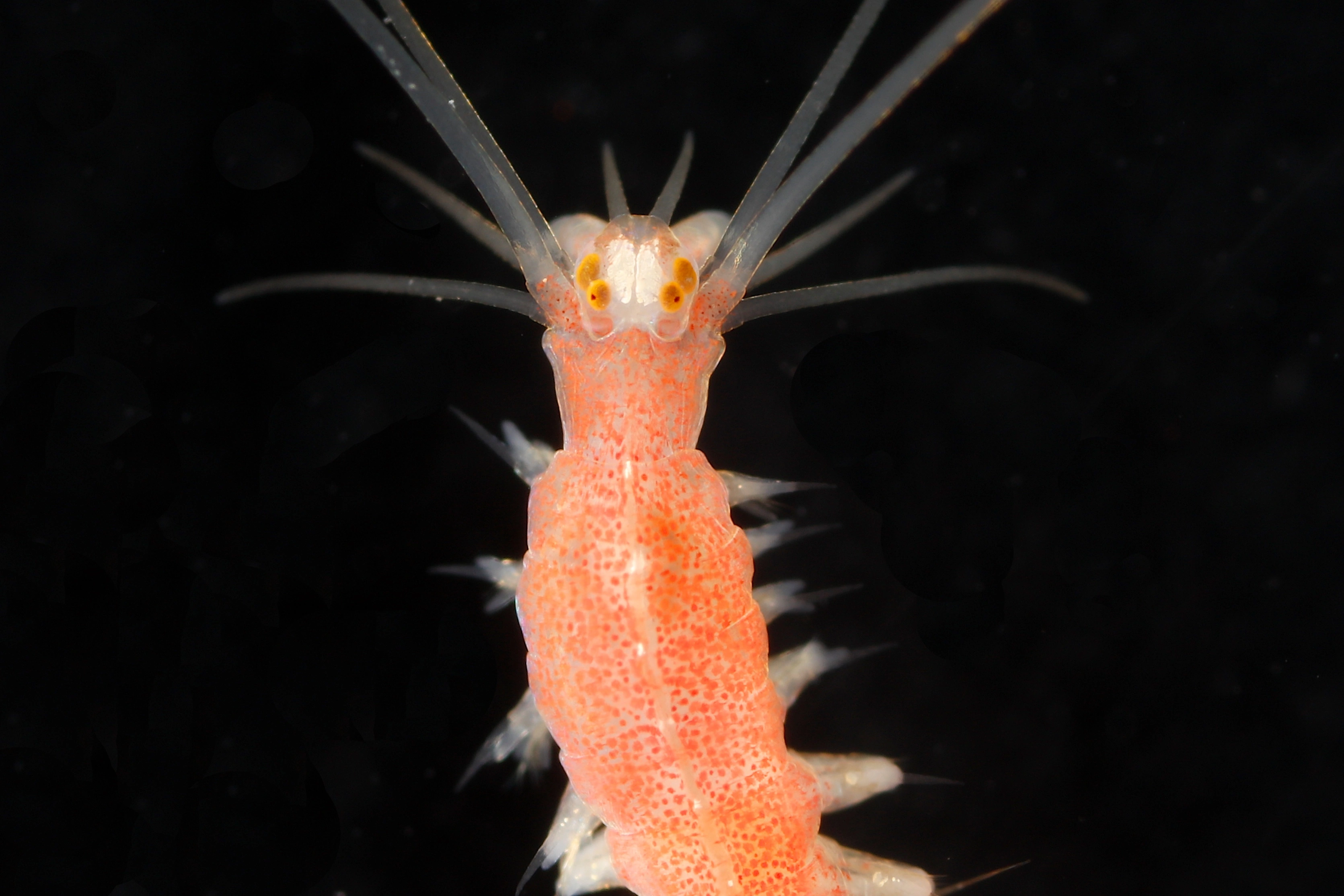Platynereis dumerilii
Platynereis dumerilii
Platynereis dumerilii is usually bright red, but may show a variety of colour morphs. It lives in mucous tubes attached to algae and in sea grass meadows in shallow waters.
- Innhold
- Measurements
- Characteristics
- Look-alikes
- Biology, ecology and behaviour
- Habitat
- Recommended citation
Measurements
Up to 5 cm long.
Characteristics
Platynereis dumerilii. Anterior end.
A red blood vessel on the dorsal side is usually visible. The species is often brightly red or reddish in colour, but may also be green or yellowish, sometimes with white speckles on the dorsal side. The tentacular cirri reach back to about chaetiger 10–15. It has three ligules and lobes in the upper part of the parapodia in the anteriormost chaetigers, one small lobe between two larger ligules. The dorsal cirri in the parapodia are greatly longer than the dorsal parapodial ligule, and a dark gland in the dorsal ligule is usually visible. The tiny rod-like paragnaths in rows on the eversible pharynx is a characteristic feature for species in this genus.
Look-alikes
This species is characteristic with its long tentacular cirri reaching to chaetiger 10–15. Neanthes irrorata also has similar long tentacular cirri, but that species has large conical paragnaths on the pharynx. Only Platynereis dumerilii has small rod-like paragnaths in rows on the pharynx.
Platynereis dumerilii. Complete specimen in a mucous tube attached to kelp.
Biology, ecology and behaviour
Specimens live in mucous tubes attached to algae or sea grass (Zostera spp.). Reproduction occurs in April–June where specimens metamorphose to the epitoke stage and swarm.
Habitat
Platynereis dumerilii make tubes attached to sea grass and algae and is common among algae and in sea grass beds in shallow waters.
Platynereis dumerilii. Anterior end.
Recommended citation
Bakken T. Platynereis dumerilli. www.artsdatabanken.no/Pages/313087. Downloaded <year-month-day>.



